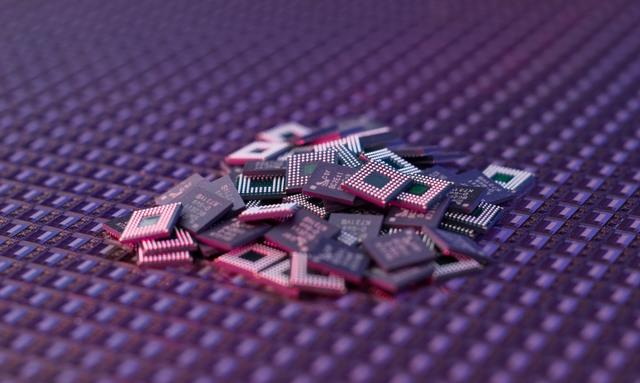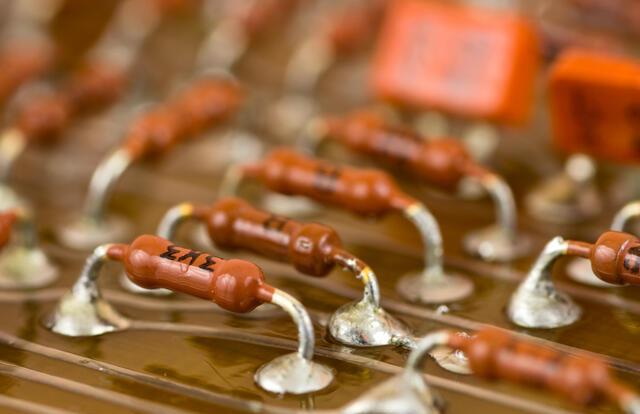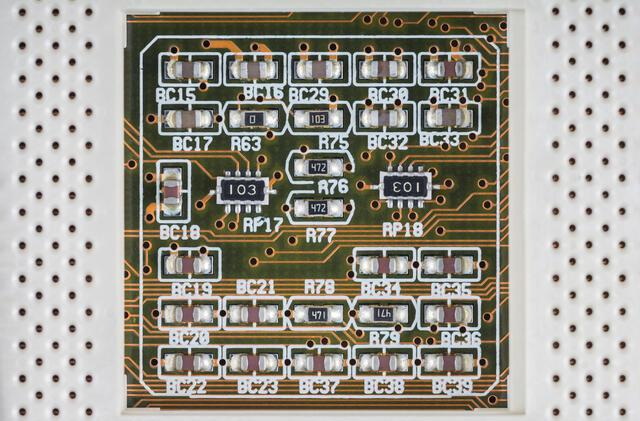Content Menu
● Common SMT Component Failures
>> 1. Solder Bridging
>> 2. Tombstoning
>> 3. Insufficient Solder Joints
>> 4. Cold Solder Joints
>> 5. Solder Balling
>> 6. Component Misalignment
>> 7. Lifted Pads
>> 8. Non-Wetting
>> 9. Component Damage
>> 10. Electrical Opens
● Preventive Measures
● Future Trends in SMT Component Reliability
● Conclusion
● FAQ
>> 1. What causes solder bridging in SMT assemblies?
>> 2. How can tombstoning be prevented?
>> 3. What are cold solder joints?
>> 4. What measures can reduce component misalignment?
>> 5. How does non-wetting affect SMT assemblies?
● Citations:
Surface Mount Technology (SMT) has revolutionized the electronics manufacturing industry, allowing for more compact designs and automated assembly processes. However, like any technology, SMT is not without its challenges. Understanding the common failures associated with SMT components is essential for manufacturers aiming to improve yield and reliability. This article explores various types of failures that can occur in SMT components, their causes, and potential solutions.

Common SMT Component Failures
1. Solder Bridging
Solder bridging occurs when solder connects two adjacent pads that should remain electrically isolated. This defect can lead to short circuits and malfunctioning circuits. The primary causes include excessive solder paste application, improper stencil design, and inaccurate component placement. To mitigate solder bridging, manufacturers should ensure proper stencil thickness and maintain accurate reflow profiles.
Additionally, using automated optical inspection (AOI) systems can help detect solder bridging early in the production process. Implementing a closed-loop feedback system where the results of inspections are used to adjust the solder paste application can further reduce the incidence of this defect.
2. Tombstoning
Tombstoning is a phenomenon where one end of a surface mount component lifts off the PCB during the reflow process, resembling a tombstone. This issue is particularly common with small components like capacitors and can be caused by uneven heating or improper placement. Solutions include optimizing the reflow profile to ensure uniform heat distribution and verifying that components are placed correctly before soldering.
Moreover, selecting components with symmetrical designs can help minimize tombstoning risks since they are less likely to be affected by thermal gradients during reflow. Manufacturers can also consider using a dual-wave soldering process for specific components that are prone to tombstoning.
3. Insufficient Solder Joints
Insufficient solder joints occur when there is not enough solder to create a reliable electrical connection between the component leads and the PCB pads. This can result from inadequate solder paste application or issues with component lead coplanarity. To address this issue, manufacturers should ensure proper solder paste printing techniques and check for coplanarity before reflow.
Implementing advanced solder paste inspection systems can help identify insufficient solder joints before they become problematic. Additionally, using solder paste with better flow characteristics can enhance joint formation.
4. Cold Solder Joints
Cold solder joints are weak connections that occur when solder does not flow properly during reflow, often due to insufficient heat or improper flux activation. These joints can lead to intermittent connections and eventual failure of the circuit. To prevent cold solder joints, it is crucial to maintain optimal reflow temperatures and ensure that the flux is adequately activated.
Regular monitoring of reflow oven temperatures and profiles is essential to avoid cold joints. Manufacturers may also benefit from using pre-heating techniques to reduce thermal shock on components during initial heating phases.
5. Solder Balling
Solder balling refers to the formation of small spheres of solder on the PCB surface, which can create unintended connections between pads or leads. This defect often arises from moisture in the solder paste or excessive flux outgassing during reflow. To minimize solder balling, manufacturers should control humidity levels in storage areas and optimize their reflow profiles.
Conducting thorough moisture sensitivity testing on materials used in SMT processes can help identify potential issues before they occur in production. Additionally, implementing vacuum packaging for moisture-sensitive components can further reduce the risk of solder balling.
6. Component Misalignment
Misalignment occurs when components are not positioned correctly on their pads during placement, leading to poor solder joint quality or open circuits. Causes include optical alignment errors in pick-and-place machines or mechanical issues such as feeder jams. Regular calibration of placement machines and thorough inspection processes can help reduce misalignment.
Utilizing advanced vision systems in pick-and-place machines can enhance alignment accuracy by providing real-time feedback on component positioning. Furthermore, training operators on best practices for machine setup and maintenance will contribute to minimizing misalignment occurrences.
7. Lifted Pads
Lifted pads happen when the pad on the PCB detaches from the substrate during the soldering process, often due to excessive heat or poor adhesion during manufacturing. This defect can lead to non-functional components and requires careful monitoring of temperature profiles during reflow.
Implementing thermal profiling tools that provide detailed information about temperature distribution across the PCB during reflow can help identify hotspots that may cause lifted pads. Additionally, ensuring proper pad design and material selection can enhance adhesion and reduce the likelihood of pad lifting.
8. Non-Wetting
Non-wetting occurs when solder fails to adhere to a surface mount component or PCB pad due to contamination or oxidation. This issue can compromise electrical connections and lead to circuit failure. To combat non-wetting, it is essential to ensure that surfaces are clean before soldering and that appropriate fluxes are used.
Conducting regular cleanliness checks on both PCBs and components prior to assembly will help identify contamination issues early in production. Utilizing no-clean fluxes may also reduce oxidation risks since they do not require cleaning after soldering.

9. Component Damage
Components may become damaged during the placement process due to excessive force or incorrect handling by pick-and-place machines. This damage can lead to failures later in the assembly process or in final product performance. Proper training for operators and regular maintenance of equipment can help minimize component damage.
Implementing soft landing techniques in pick-and-place operations allows components to be placed gently onto pads without excessive force, thereby reducing potential damage risks.
10. Electrical Opens
Electrical opens occur when two points that should be connected become separated due to insufficient solder or other defects in the assembly process. Common causes include clogged stencil apertures during paste printing or issues with PCB fabrication itself. Regular checks of stencil cleanliness and adherence to IPC standards for paste application can help prevent electrical opens.
Additionally, employing automated optical inspection (AOI) systems post-soldering allows for early detection of electrical opens before final assembly stages.
Preventive Measures
To mitigate these common failures in SMT components, manufacturers can adopt several preventive measures:
- Regular Maintenance: Implement routine maintenance schedules for all SMT equipment, including pick-and-place machines and reflow ovens.
- Quality Control: Establish stringent quality control processes at each stage of production, from component selection through final assembly.
- Training: Provide comprehensive training for operators on best practices for handling components and operating machinery.
- Process Optimization: Continuously analyze and optimize manufacturing processes based on feedback from quality control inspections.
- Material Selection: Use high-quality materials that are less prone to defects during assembly.
- Data Analytics: Utilize data analytics tools to track defect rates over time and identify trends that may indicate underlying issues within manufacturing processes.
Future Trends in SMT Component Reliability
As technology continues to evolve, so do strategies for enhancing SMT component reliability:
- Advanced Materials: The development of new materials that offer better thermal stability and adhesion properties will play a critical role in reducing failures associated with SMT assemblies.
- AI Integration: The integration of artificial intelligence into manufacturing processes will enable predictive maintenance strategies that anticipate equipment failures before they occur.
- Smart Manufacturing: The shift towards smart factories equipped with IoT devices will facilitate real-time monitoring of production lines, leading to faster identification of defects.
- Sustainability Practices: As sustainability becomes a priority within manufacturing sectors, adopting eco-friendly materials and processes will not only benefit the environment but also enhance overall product reliability by reducing harmful contaminants.
Conclusion
Understanding the common failures associated with SMT components is crucial for manufacturers aiming to enhance production efficiency and product reliability. By recognizing potential issues such as solder bridging, tombstoning, insufficient solder joints, cold solder joints, solder balling, misalignment, lifted pads, non-wetting, component damage, and electrical opens, manufacturers can implement effective strategies to mitigate these risks.
By adopting preventive measures such as regular maintenance, quality control checks, operator training, process optimization, careful material selection, data analytics tools usage, advanced materials adoption, AI integration into processes, smart manufacturing practices implementation, and sustainability efforts—companies can significantly reduce the occurrence of these failures in their SMT assemblies while improving overall product quality.

FAQ
1. What causes solder bridging in SMT assemblies?
Solder bridging is primarily caused by excessive solder paste application or improper stencil design leading to unintended connections between adjacent pads.
2. How can tombstoning be prevented?
To prevent tombstoning, ensure even heating during the reflow process and verify correct placement of components before soldering.
3. What are cold solder joints?
Cold solder joints are weak connections formed when solder does not flow properly during reflow due to insufficient heat or improper flux activation.
4. What measures can reduce component misalignment?
Regular calibration of pick-and-place machines and thorough inspection processes can help minimize component misalignment during assembly.
5. How does non-wetting affect SMT assemblies?
Non-wetting occurs when solder fails to adhere properly due to contamination or oxidation, leading to compromised electrical connections that may result in circuit failure.
Citations:
[1] https://www.pcbelec.com/pcb_assembly_defects.html
[2] https://www.zjyingxing.com/info/what-are-the-common-smt-pick-and-place-machine-88387624.html
[3] https://www.viasion.com/blog/common-challenges-in-smt-assembly-and-solutions/
[4] https://www.protoexpress.com/blog/common-errors-surface-mount-technology-smt/
[5] https://hilelectronic.com/pcba-smt-common-faults/
[6] https://jhdpcb.com/blog/efficient-smt-assembly/
[7] https://www.allion.com/tech_syst_smt/
[8] https://www.youtube.com/watch?v=64w1uH8FkcM
[9] https://www.myemssolutions.com/the-most-common-smt-errors-during-the-manufacturing-process/
[10] https://resources.altium.com/p/common-pcb-assembly-defects-you-should-know




















